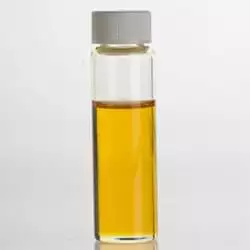IUPAC Name
C10H16
Cas Number
138-86-3
HS Code
-
Formula
Appearance
Clear Liquid
Common Names
Dipentene
Packaging
180 KG HDPE DRUMS
Dipentene (also called D-Limonene), is a terpene liquid found in various volatile oils such as cardamon, mace, nutmeg , turpentine oil. Dipentene is mainly composed of Limonene, beta-Phellandrene, Myrcene and other terpenes.
In nature, limonene is formed from the molecule geranyl pyrophosphate, via cyclization of a neryl carbocation or its equivalent. In the final step, the C=C double bond is formed through the loss of a proton from the carbocation.
Commercially, d-limonene is obtained from citrus fruits through the process of steam distillation and centrifugal separation. Commonly, orange oil is extracted as a by-product of orange juice production by centrifugation. The orange oil obtained composes greater than 90% of d-limonene. Further separation takes place via steam distillation, where steam is passed through the orange oil to distill limonene. Limonene is relatively stable and can be distilled without decomposition, but at elevated temperatures, it cracks to form isoprene. The limonene extracted is commonly D-limonene, but at 300°C it racemizes to dipentene.
Dipentene (also called D-Limonene), is a terpene liquid found in various volatile oils such as cardamon, mace, nutmeg , turpentine oil. Dipentene is mainly composed of Limonene, beta-Phellandrene, Myrcene and other terpenes.
In nature, limonene is formed from the molecule geranyl pyrophosphate, via cyclization of a neryl carbocation or its equivalent. In the final step, the C=C double bond is formed through the loss of a proton from the carbocation.
Commercially, d-limonene is obtained from citrus fruits through the process of steam distillation and centrifugal separation. Commonly, orange oil is extracted as a by-product of orange juice production by centrifugation. The orange oil obtained composes greater than 90% of d-limonene. Further separation takes place via steam distillation, where steam is passed through the orange oil to distill limonene. Limonene is relatively stable and can be distilled without decomposition, but at elevated temperatures, it cracks to form isoprene. The limonene extracted is commonly D-limonene, but at 300°C it racemizes to dipentene.
